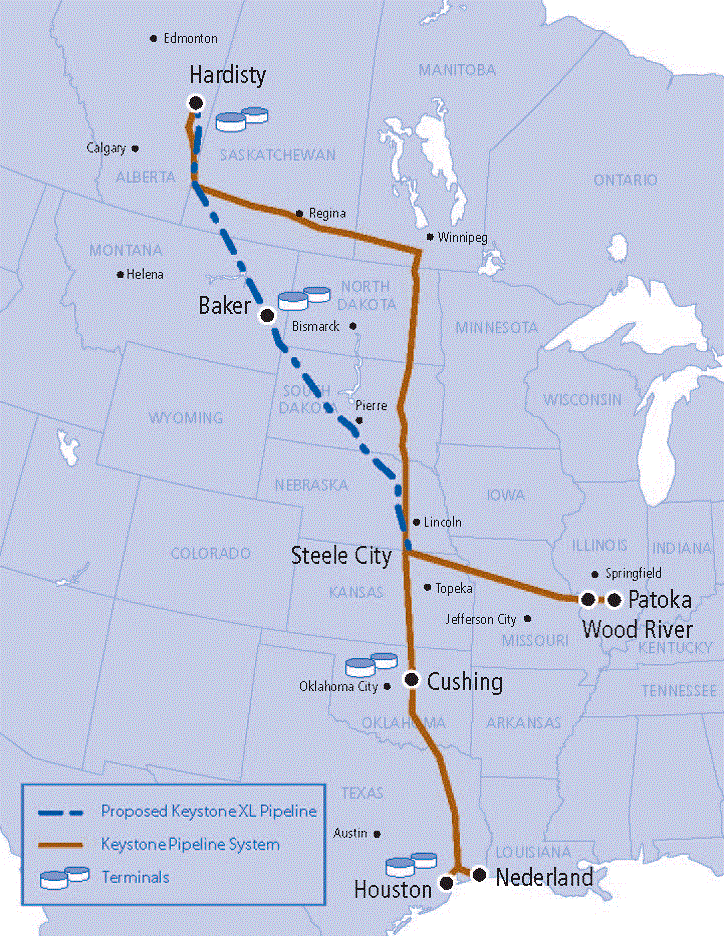How do you do an end run around courts that have blocked your presidential permit for a new pipeline? If you’re President Donald Trump, you issue a new one and revoke the old one.
On March 29, Trump granted a new presidential permit for the construction of the Keystone XL pipeline.
Last November the previous permit had been quashed by a Montana federal court. Judge Brian Morris ruled the project required further examination and ordered a new environmental review. The judgement considered everything from bats and whooping cranes to pipeline demand.
His ruling found that the state department fell short of a “hard look” on several items and it must do supplementary work to comply with its obligations under the National Environmental Policy Act.
These areas include looking at the effects of current oil prices on the viability of the pipeline, the cumulative effects of the Alberta Clipper expansion (an Enbridge project) and Keystone, a survey of potential cultural resources on 1,038 acres, and updating modelling of potential oil spills and recommended mitigation measures.
TransCanada tried in recent weeks to get the court to allow it to get some preparatory work done this spring, only to have that request denied.
The Montana ruling came last year as TransCanada had been gearing up for full-on construction of the pipeline in the second half of 2019 after a decade of delay. In July 2018 the corporation started inspecting and, as needed, refurbishing its massive stockpiles of pipe that have been sitting since 2011, in preparation for usage in the project.
Keystone XL had been all but dead when then-president Barrack Obama denied a presidential permit in 2015. That changed with the election of Trump in November 2016. In one of his first acts after being sworn in, Trump invited TransCanada to resubmit its application, which he then approved a few months later in the spring of 2017. His reversal of the 2015 decision by Obama on the pipeline, in particular with regards to the consideration of climate change as a reason to kill the project, factored into the judgement, without directly referring to either president.
Trump told reporters on Nov. 9, “It was a political decision made by a judge. I think it’s a disgrace — 48,000 jobs. I approved it. It’s ready to start.”
This new permit may seek to wipe the judicial slate clean. It states, “This permit supersedes the presidential permit issued to the permittee, dated March 23, 2017. For the avoidance of doubt, I hereby revoke that March 23, 2017, permit. Furthermore, this permit grants the permission described in the previous paragraph and revokes the March 23, 2017, permit notwithstanding Executive Order 13337 of April 30, 2004.”
In a press release on March 29, TransCanada said it thanked Trump for affirming his support for the Keystone XL pipeline project by issuing a new presidential permit.
The release said, “The president’s action today clarifies the national importance of Keystone XL and aims to bring more than 10 years of environmental review to closure.”
“President Trump has been clear that he wants to create jobs and advance U.S. energy security and the Keystone XL pipeline does both of those things,” said Russ Girling, TransCanada’s president and chief executive officer. “We thank President Trump for his leadership and steadfast support to enable the advancement of this critical energy infrastructure project for North America.”
“The magnitude of the work on this project has been extensive. The Keystone XL pipeline has been studied more than any other pipeline in history and the environmental reviews are clear – the project can be built and operated in an environmentally sustainable and responsible way,” added Girling.
The 36-inch pipeline, with a capacity of 830,000 barrels of oil per day (bpd), is intended to transport primarily Canadian oil from the Western Canadian pipeline hub of Hardisty, Alta, to Steele City, Nebraska. A lateral pipeline, called the Bakken Marketlink, would contribute up to 100,000 bpd from the Bakken oilfield of North Dakota, joining the mainline at Baker, Mont. The southern portion of the Keystone XL pipeline, which runs to the Gulf Coast, was completed and put into operation several years ago.
“We welcome the decision by the president to greenlight the Keystone XL project in the U.S.” said Bronwyn Eyre, Saskatchewan’s minister of Energy and Resources. “Additional pipeline capacity is urgently needed. Without new capacity, the negative economic impacts will continue to be felt. This is much needed energy infrastructure and we hope it continues to move forward.”



